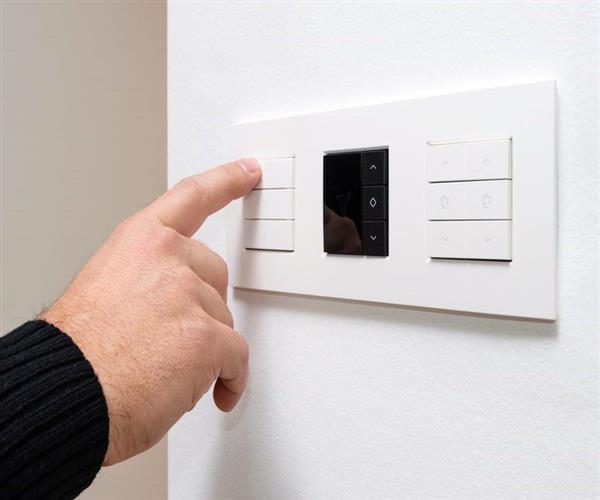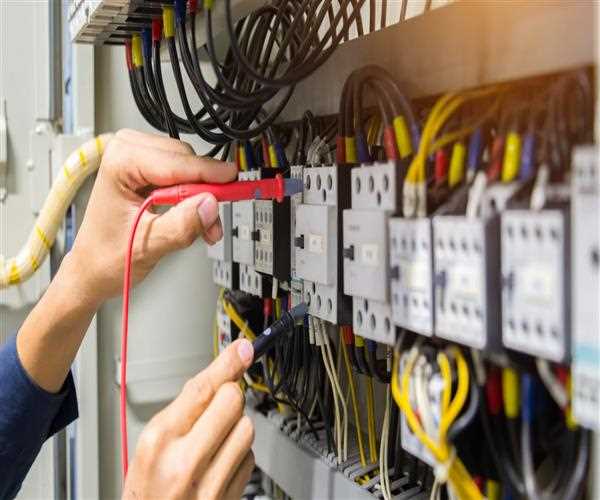Types of Switches for Home Use
When it comes to home wiring, there are various types of switches to choose from. Depending on the specific needs of a room, the right switch can enhance functionality, safety, and convenience. Here are some of the most common types of switches used in homes:
Traditional Switch: This is a basic on/off switch that controls the flow of electricity to a light or appliance. They are easy to install, affordable, and typically the standard switch used in most homes.
Dimmer Switch: A dimmer switch is designed to control the brightness of a light. This switch allows you to adjust the light level to suit your needs. Dimmer switches are commonly used in bedrooms, living rooms, and dining rooms.
Three-Way Switch: A three-way switch is used to control a light from two different locations. For example, you could use a three-way switch to turn on a light from the entrance to a room and another switch inside the room.
Motion Sensor Switch: A motion sensor switch turns on a light when it senses movement and turns it off when there is no movement. These switches are typically used in garages, closets, and hallways.
Smart Switch: A smart switch is a switch that can be controlled by a smartphone or other smart device. They allow you to control the lighting in your home from anywhere, at any time.
Smart Dimmer Switch: A smart dimmer switch is a dimmer switch that can be controlled by a smartphone or other smart device. They provide the convenience and versatility of a smart switch with the added functionality of a dimmer switch.
Smart vs. Traditional Switch
A traditional switch is a simple on/off switch that controls the flow of electricity to a light or appliance. While they are affordable and easy to install, they do not provide any additional features.
A smart switch, on the other hand, provides added convenience and functionality. With a smart switch, you can control the lighting in your home from anywhere, at any time. You can use a smartphone or other smart device to turn lights on and off, adjust brightness, and set schedules.

Dimmer Switch and LED Lights
Dimmer switches are designed to control the brightness of incandescent lights, but they can also be used with LED lights. However, it's important to make sure that the dimmer switch is compatible with LED lights.
When selecting a dimmer switch for use with LED lights, look for one that is specifically labelled as compatible with LED lights. This will ensure that the switch is able to control the LED lights properly without causing any damage or flickering.
Three-Way Switch and its usage in a home's electrical system
A three-way switch is a type of electrical switch that allows you to control a light or set of lights from two different locations. Unlike a single-pole switch, which only has two terminal screws, a three-way switch has three terminal screws, and it's used in conjunction with another three-way switch to control the same light or lights.
In a home's electrical system, three-way switches are commonly used in stairways, hallways, or large rooms where light needs to be controlled from multiple locations. For example, a three-way switch at the top of the stairs and another at the bottom would allow you to turn the lights on or off from either location.
To wire a three-way switch, you will need three-way switch wiring, which includes three wires: a black "hot" wire that carries the electricity from the power source to the switch, a white "neutral" wire that returns the electricity back to the power source, and a red or yellow "traveler" wire that carries the electricity from one switch to the other.
It's important to note that three-way switches can be a bit more complicated to install than single-pole switches, so it's recommended to consult a professional electrician if you're not familiar with electrical wiring.
Motion Sensor Switch
A Motion Sensor Switch, also known as an Occupancy Sensor Switch or Motion Detector Switch, is a switch that automatically turns lights on when motion is detected in the room and turns the lights off when motion is no longer detected.
These switches work by using infrared technology to detect motion within the room. When motion is detected, the switch sends a signal to turn the lights on. When there is no motion detected for a set amount of time, typically set by the user, the switch will automatically turn the lights off.
Motion sensor switches are a convenient and energy-efficient way to control lighting in your home. They can help to save energy by ensuring that lights are only turned on when someone is in the room, and they can also enhance safety by automatically turning on lights when entering a room in the dark.
There are different types of motion sensor switches available, including passive infrared (PIR) sensors, ultrasonic sensors, and dual-technology sensors. PIR sensors detect motion by detecting changes in infrared radiation, while ultrasonic sensors detect motion by emitting high-frequency sound waves and detecting changes in the reflected sound waves. Dual-technology sensors use a combination of both PIR and ultrasonic technology for more reliable and accurate motion detection.
When choosing a motion sensor switch, it's important to consider the size of the room, the type of lighting you have, and the level of sensitivity you need. Some motion sensor switches are designed specifically for use with LED lights, while others may not be compatible. It's also important to consider the range of the sensor, as well as the minimum and maximum time that the lights will stay on after motion is detected.

Smart Dimmer Switch and Home Automation
A smart dimmer switch is a dimmer switch that can be controlled by a smartphone or other smart device. This type of switch provides the convenience and versatility of a smart switch with the added functionality of a dimmer switch.
Smart dimmer switches enhance home automation by allowing you to control the lighting in your home from anywhere, at any time. You can use a smartphone or other smart device to adjust the brightness of the lights, set schedules, and even create scenes that adjust multiple lights at once.
For example, you could create a scene that turns on the lights in your living room to a certain brightness level, turns on the TV, and lowers the shades, all with just one tap on your smartphone. This type of automation not only enhances convenience but also helps to save energy by allowing you to control lighting even when you're not at home.
Safety Concerns with Different Types of Switches
There are a few safety concerns to be aware of when using different types of switches in a home. These include:
Electrical Shock: When working with electrical switches, it's important to be careful to avoid electrical shock. Always make sure to turn off the power before working on any electrical switch, and only work on switches that you feel comfortable with.
Fire Hazard: Improper wiring of switches can cause a fire hazard. Always make sure to follow the manufacturer's instructions and local building codes when installing switches.
Overloading: Overloading a switch can cause it to fail, which can result in a fire hazard. Make sure to never exceed the maximum recommended wattage for a switch.
In conclusion, different types of switches can enhance the functionality, safety, and convenience of your home's electrical system. When choosing a switch, consider your specific needs and the features you are looking for. Always make sure to follow the manufacturer's instructions and local building codes, and take care to avoid electrical shock and fire hazards.